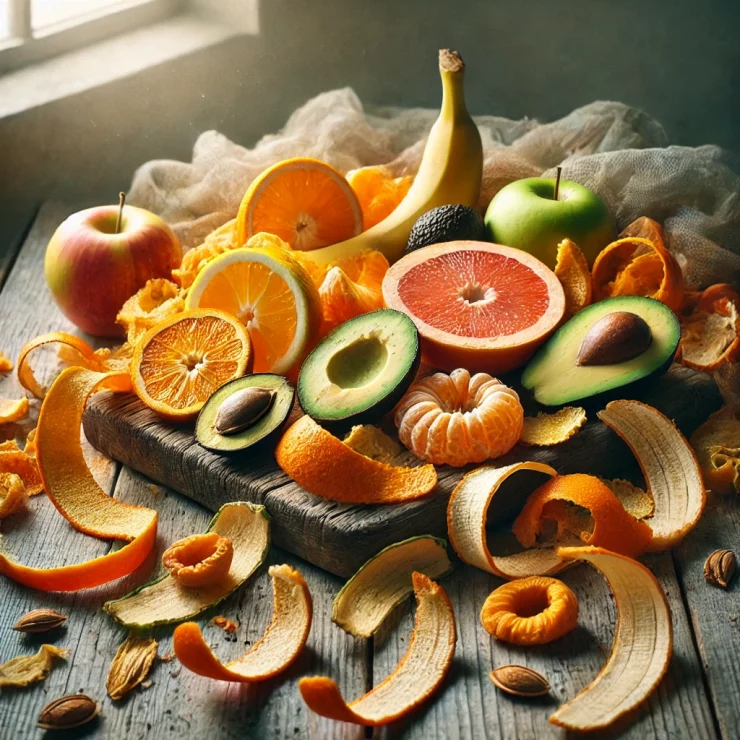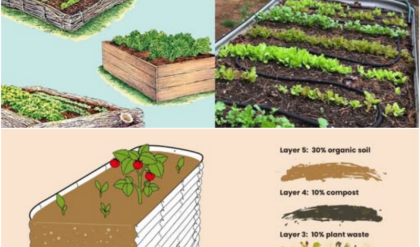Most of us discard fruit peels and pits without a second thought, assuming they’re just waste. However, these often-overlooked parts of fruits are full of nutrients, flavor, and practical uses that can benefit your health, beauty routine, home, and even your garden. Instead of tossing them into the trash, here are some clever ways to use fruit peels and pits that will make you rethink what you’ve been throwing away.
1.Make Homemade Cleaners
Many fruit peels, especially citrus like oranges, lemons, and limes, are packed with natural oils that can effectively cut through grease and grime. These peels contain antibacterial and antiseptic properties, making them perfect for homemade, chemical-free cleaners.
How to Use:
Citrus Cleaner: Place citrus peels (orange, lemon, or lime) in a jar and cover them with white vinegar. Let the mixture sit for 2-3 weeks, then strain it and pour the liquid into a spray bottle. Use it to clean countertops, sinks, and greasy surfaces.
Air Freshener: Simmer citrus peels with cinnamon and cloves in water for a natural home fragrance.
2.Infuse Flavor into Water and Teas
Fruit peels are loaded with flavor and can be used to add a refreshing taste to your drinks. Citrus peels like lemon, lime, and orange are especially great for infusing water or tea, but you can also experiment with apple peels or even mango skins.
How to Use:
Flavored Water: Add fresh or dried citrus peels to a jug of water to create a refreshing, flavored drink. This helps boost hydration and adds a subtle, natural sweetness.
Tea Infusion: Dry out citrus, apple, or pear peels and add them to your favorite tea blends. They’ll enhance the flavor with a zesty or fruity note.
3.Use as a Natural Fertilizer
Fruit peels and pits can work wonders in the garden. Many fruit peels, such as banana and citrus, are rich in potassium, nitrogen, and phosphorus—essential nutrients that plants need to thrive. Pits can also be composted or used to grow new plants.
How to Use:
Banana Peel Fertilizer: Bury banana peels in the soil near the roots of your plants or add them to your compost pile. This enriches the soil and promotes healthy growth.
Citrus Peel Pest Repellent: Scatter dried citrus peels around your garden to repel pests like ants and slugs.
Avocado Pits for Compost: Avocado pits break down slowly but add valuable nutrients to your compost when crushed into smaller pieces.
4.Create Fruit Peel Powder for Skincare
Many fruit peels, such as orange and lemon, are rich in antioxidants and vitamins that can do wonders for your skin. Dried and ground into powder, these peels can be used to exfoliate, brighten, and rejuvenate your skin.
How to Use:
Exfoliating Scrub: Dry orange or lemon peels, grind them into a fine powder, and mix with honey or yogurt to create a natural face scrub. This brightens the skin and removes dead cells.
Brightening Face Mask: Combine citrus peel powder with aloe vera or rose water for a face mask that can help reduce dark spots and even out your complexion.
5.Make Fruit Peel Syrups and Jams
Fruit peels, especially citrus and apple, are packed with flavor and can be turned into delicious homemade syrups or jams. These can be used to sweeten desserts, flavor drinks, or serve as a spread for bread and pastries.
How to Use:
Citrus Peel Syrup: Boil citrus peels with sugar and water to create a tangy, flavorful syrup. Drizzle it over pancakes, yogurt, or use it in cocktails.
Apple Peel Jam: Simmer apple peels with sugar, cinnamon, and water to make a delicious homemade jam. This can be a great topping for toast, oatmeal, or desserts.
6.Natural Teeth Whitener
Did you know that the inside of banana and orange peels can help whiten your teeth naturally? The minerals in these peels, such as potassium and magnesium, can help remove stains and promote a brighter smile.
How to Use:
Rub the inside of a banana or orange peel on your teeth for 1-2 minutes, then rinse and brush your teeth as usual. Repeat this 2-3 times a week for the best results.
7.Homemade Fruit Vinegar
Fruit peels, particularly apple peels, can be used to make homemade vinegar. This natural vinegar can be used in salad dressings, marinades, or even as a natural cleaner.
How to Use:
Place apple peels and cores in a jar, cover them with water, and add a tablespoon of sugar. Let the mixture ferment for 1-2 weeks, stirring occasionally. Strain the liquid and let it sit for another 2-3 weeks to fully develop into vinegar.
8.Candied Peels for a Sweet Treat
Citrus peels can be turned into a tasty, sweet treat by candying them. This is a delicious way to make use of orange, lemon, or grapefruit peels and enjoy a zesty snack or garnish for desserts.
How to Use:
Boil citrus peels in sugar and water until they soften and absorb the syrup. Allow them to dry, then roll in sugar for a crunchy, sweet snack.
9.Grow New Plants from Pits
Instead of throwing away fruit pits, use them to grow new plants. Avocado, peach, and apricot pits can all be sprouted and grown into new plants with a little patience and care.
How to Use:
Avocado Pit: Insert toothpicks around the avocado pit and suspend it over a jar of water with the base submerged. After a few weeks, roots and a sprout will appear, allowing you to plant it in soil.
Peach or Apricot Pits: Dry the pits, crack them open, and plant the seeds inside in well-drained soil to grow your own fruit tree.
10.Repurpose for Crafts and Décor
Fruit peels and pits can also be used in creative crafts and home décor projects. Dried peels can be turned into potpourri, and pits can be carved into decorative items or used for simple DIY crafts.
How to Use:
Potpourri: Dry citrus peels, add cloves, cinnamon sticks, and dried flowers, and place them in a bowl for a naturally fragrant potpourri.
DIY Crafts: Carve larger pits, like avocado or peach pits, into beads or tiny sculptures for a fun, sustainable craft project.
Fruit peels and pits are often discarded as waste, but they’re incredibly versatile and packed with potential. From natural cleaning solutions to skincare, gardening, and delicious recipes, these “leftovers” have much more to offer. By using these tips, you can make the most out of your fruit peels and pits, reducing waste and enjoying the benefits they provide for your home, health, and garden. So, stop throwing them away—start reusing them today!





